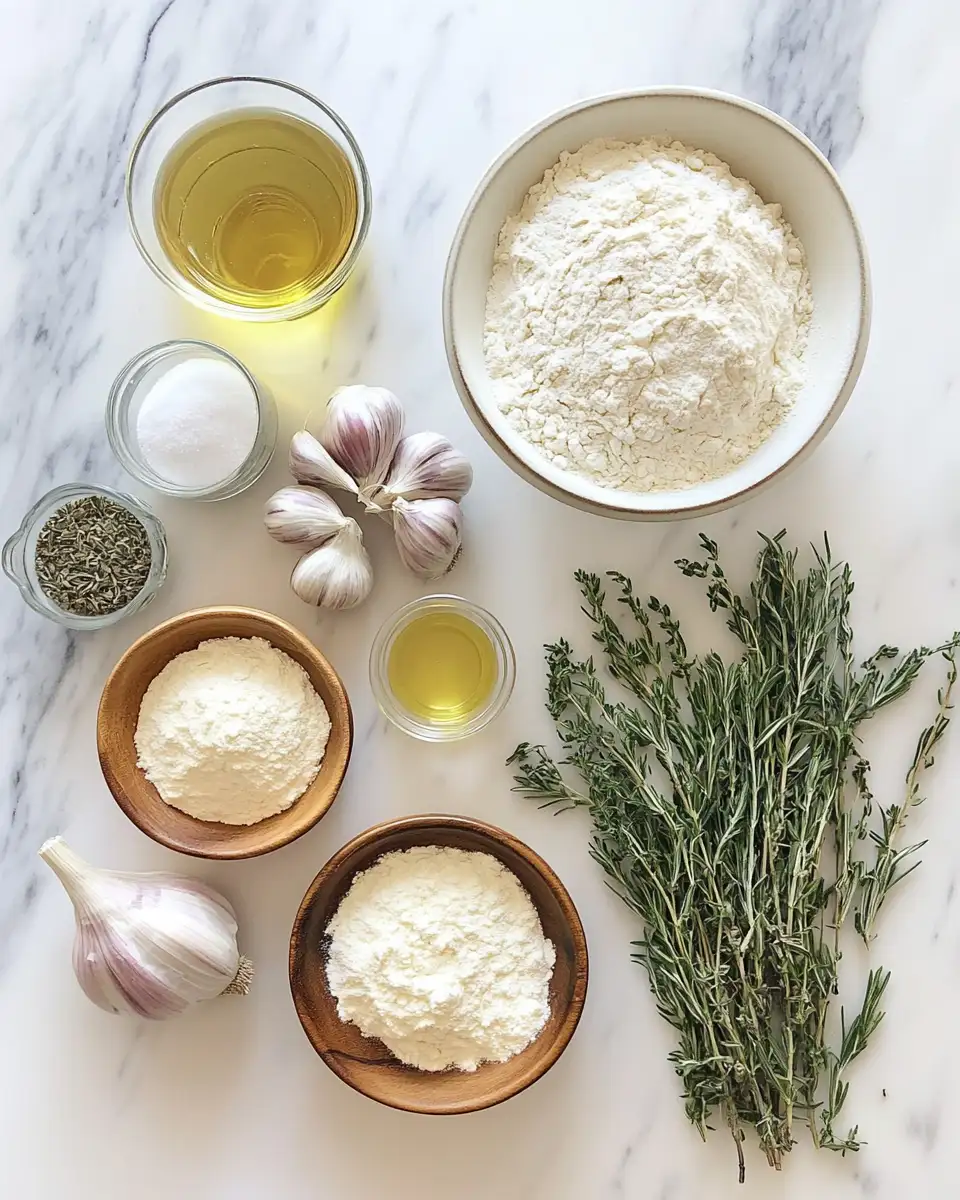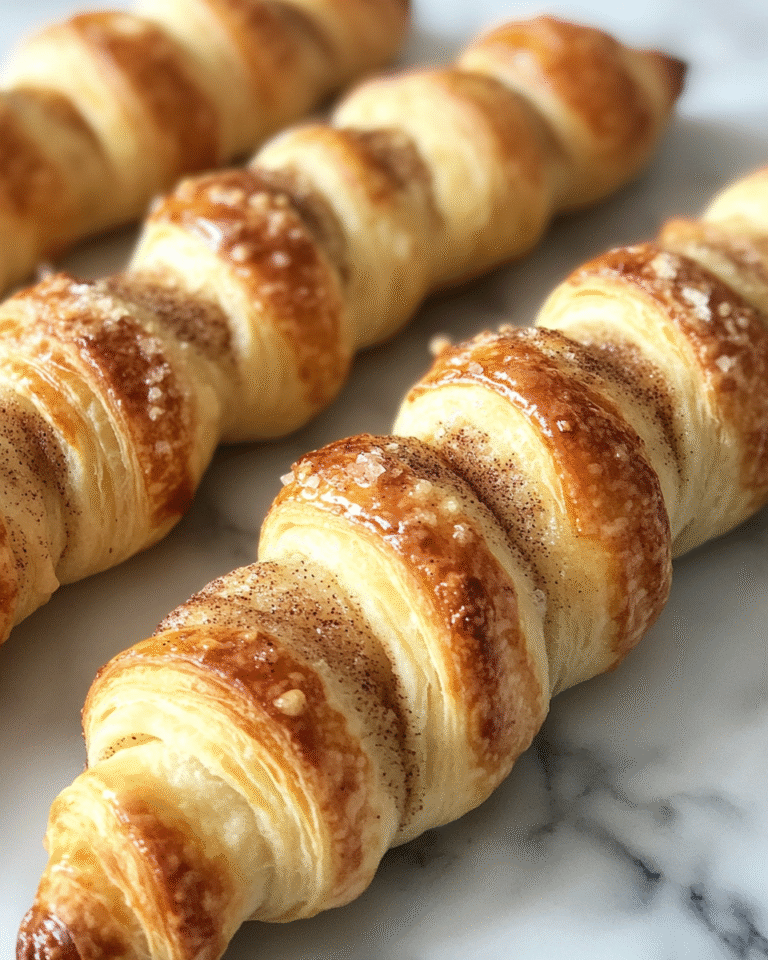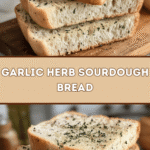I’m so glad you’re here because I can’t wait to share this recipe for Garlic Herb Sourdough Bread with you. There’s something deeply comforting about the smell of garlic mingling with fresh herbs and that tangy sourdough crust baking away in the oven. It’s the kind of bread that turns a simple meal into a gathering, much like the afternoons I spent in my mum’s kitchen back in southern England—where food was always about bringing people together. This bread is just that: warm, inviting, and full of flavour that feels like a hug from the inside.
Table of Contents
Why You’ll Love This Garlic Herb Sourdough Bread
What makes this Garlic Herb Sourdough Bread so special is its perfect balance of rustic tang and fresh, vibrant herbs. Unlike your typical loaf, it carries the depth and complexity that only a slow-fermented sourdough starter can bring. I remember my early days in professional kitchens, where bread was more than a side—it was a statement. This recipe captures that artisanal spirit but keeps the process accessible for home bakers. Plus, the garlic and herbs add an irresistible aroma that fills your kitchen and makes every bite a little celebration.
Ingredients You’ll Need for This Garlic Herb Sourdough Bread
Choosing the right ingredients is the foundation of any great bread, and sourdough is no exception. I always recommend using high-quality flour—preferably unbleached bread flour or a blend with whole wheat—to get that perfect chew and flavour. Fresh herbs make all the difference here; if you can source your garlic and herbs locally or from your garden, even better. These simple, honest ingredients come together to create something truly magical.
- 500g (about 4 cups) bread flour
- 350g (1 ½ cups) water, room temperature
- 100g active sourdough starter (fed and bubbly)
- 10g (2 teaspoons) sea salt
- 4 cloves garlic, finely minced
- 2 tablespoons fresh rosemary, chopped
- 1 tablespoon fresh thyme leaves
- 2 tablespoons olive oil, plus extra for brushing
Substitutions: If you don’t have fresh herbs, dried rosemary and thyme can work, but reduce the quantity to 1 teaspoon each to avoid overpowering the bread. You can also swap olive oil for melted butter for a richer flavour.
Nutrition Facts
- Calories: Approximately 220 per slice (1/12th of the loaf)
- Protein: 7g
- Fat: 5g
- Carbohydrates: 38g
- Fiber: 2g
- Sugar: 1g
- Sodium: 290mg
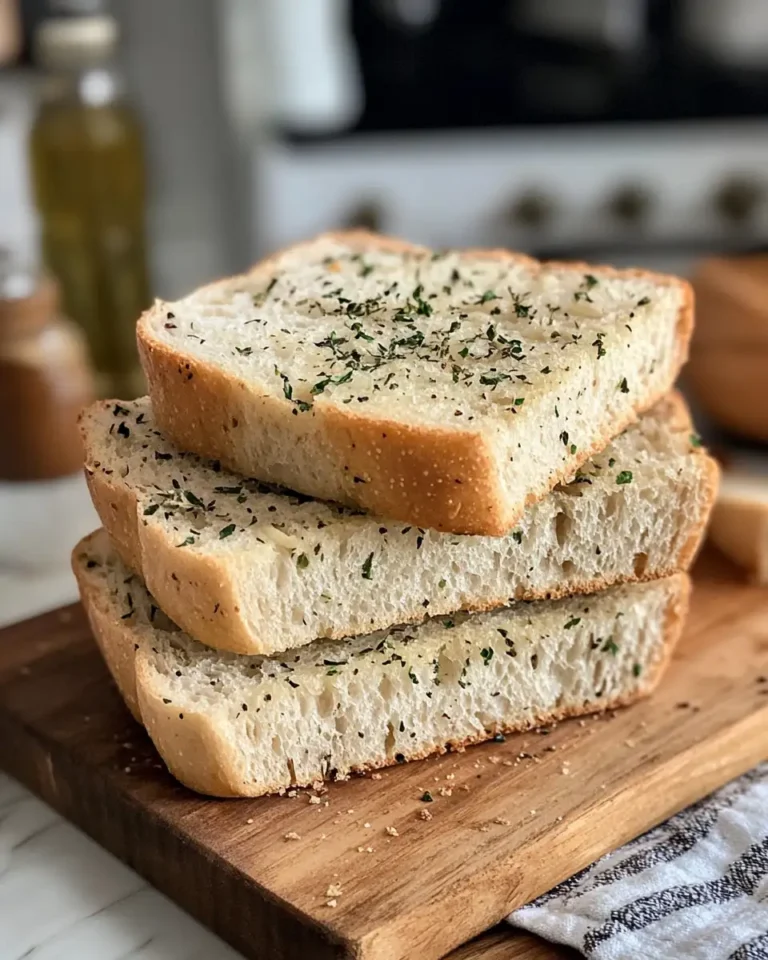
Irresistible Garlic Herb Sourdough Bread Recipe You Need to Try
Learn how to make delicious Garlic Herb Sourdough Bread. Easy recipe with step-by-step instructions.
- Total Time: 45 minutes
- Yield: 4 servings 1x
Ingredients
Choosing the right ingredients is the foundation of any great bread, and sourdough is no exception. I always recommend using high-quality flour—preferably unbleached bread flour or a blend with whole wheat—to get that perfect chew and flavour. Fresh herbs make all the difference here; if you can source your garlic and herbs locally or from your garden, even better. These simple, honest ingredients come together to create something truly magical.
- 500g (about 4 cups) bread flour
- 350g (1 ½ cups) water, room temperature
- 100g active sourdough starter (fed and bubbly)
- 10g (2 teaspoons) sea salt
- 4 cloves garlic, finely minced
- 2 tablespoons fresh rosemary, chopped
- 1 tablespoon fresh thyme leaves
- 2 tablespoons olive oil, plus extra for brushing
Substitutions: If you don’t have fresh herbs, dried rosemary and thyme can work, but reduce the quantity to 1 teaspoon each to avoid overpowering the bread. You can also swap olive oil for melted butter for a richer flavour.
Instructions
- In a large mixing bowl, combine the bread flour and water. Mix just until no dry flour remains. Cover the bowl with a damp towel and let it rest for 30 minutes. This process, called autolyse, helps develop gluten and improves texture.
- Add the sourdough starter and sea salt to the dough. Mix well until fully incorporated. This dough will be sticky, but resist adding extra flour.
- Gently fold in the minced garlic, fresh rosemary, thyme, and olive oil. Make sure the herbs and garlic are evenly distributed without overworking the dough.
- Begin the bulk fermentation by covering the bowl with a damp towel or plastic wrap. Every 30 minutes for the first two hours, perform a series of stretch and folds: reach under the dough, stretch it upwards, and fold it over itself. This strengthens the dough’s structure.
- After 4-5 hours of fermentation at room temperature, the dough should be puffy with bubbles visible on the surface. Turn it out onto a lightly floured surface and shape it into a tight round loaf.
- Place the shaped dough into a floured banneton (or a bowl lined with a clean kitchen towel) and cover. Refrigerate overnight or for up to 12 hours. This slow proof enhances flavour and makes the bread easier to score.
- Preheat your oven to 450°F (230°C) with a Dutch oven or heavy lidded pot inside for at least 30 minutes. Carefully transfer the dough onto parchment paper, score the top with a sharp blade, and place it inside the preheated pot.
- Bake covered for 20 minutes, then remove the lid and bake for another 20-25 minutes until the crust is deeply golden and crisp.
- Remove the bread from the oven and let it cool completely on a wire rack before slicing. This cooling step is crucial for the crumb to set properly.
- Prep Time: 15 minutes
- Cook Time: 30 minutes
- Category: Main Dish
- Method: Cooking
- Cuisine: International
Steps to Create Your Garlic Herb Sourdough Bread
- In a large mixing bowl, combine the bread flour and water. Mix just until no dry flour remains. Cover the bowl with a damp towel and let it rest for 30 minutes. This process, called autolyse, helps develop gluten and improves texture.
- Add the sourdough starter and sea salt to the dough. Mix well until fully incorporated. This dough will be sticky, but resist adding extra flour.
- Gently fold in the minced garlic, fresh rosemary, thyme, and olive oil. Make sure the herbs and garlic are evenly distributed without overworking the dough.
- Begin the bulk fermentation by covering the bowl with a damp towel or plastic wrap. Every 30 minutes for the first two hours, perform a series of stretch and folds: reach under the dough, stretch it upwards, and fold it over itself. This strengthens the dough’s structure.
- After 4-5 hours of fermentation at room temperature, the dough should be puffy with bubbles visible on the surface. Turn it out onto a lightly floured surface and shape it into a tight round loaf.
- Place the shaped dough into a floured banneton (or a bowl lined with a clean kitchen towel) and cover. Refrigerate overnight or for up to 12 hours. This slow proof enhances flavour and makes the bread easier to score.
- Preheat your oven to 450°F (230°C) with a Dutch oven or heavy lidded pot inside for at least 30 minutes. Carefully transfer the dough onto parchment paper, score the top with a sharp blade, and place it inside the preheated pot.
- Bake covered for 20 minutes, then remove the lid and bake for another 20-25 minutes until the crust is deeply golden and crisp.
- Remove the bread from the oven and let it cool completely on a wire rack before slicing. This cooling step is crucial for the crumb to set properly.
Tips for Making the Best Garlic Herb Sourdough Bread
Mastering sourdough takes patience, but a few thoughtful tweaks can make your loaf shine every time. I learned early on that consistency in starter activity is key—always feed your starter regularly and look for those lively bubbles before baking.
- Use a digital scale to measure ingredients precisely—baking is a science, and accuracy matters.
- Don’t rush the fermentation—time is flavour. If your kitchen is cool, give the dough extra hours to rise.
- When folding the dough, be gentle to preserve the air bubbles that give sourdough its airy crumb.
- Fresh herbs will impart a brighter, greener flavour; add them right before shaping to keep their vibrancy.
- Invest in a good bread lame or sharp knife for scoring to ensure beautiful oven spring.
These insights come from years of juggling professional kitchens and family life, where sometimes you have to balance precision with a bit of joyful chaos. Learn more: Breakfast Bliss: Pancake Wrapped Sausage on a Stick Delight
Serving Suggestions and Pairings
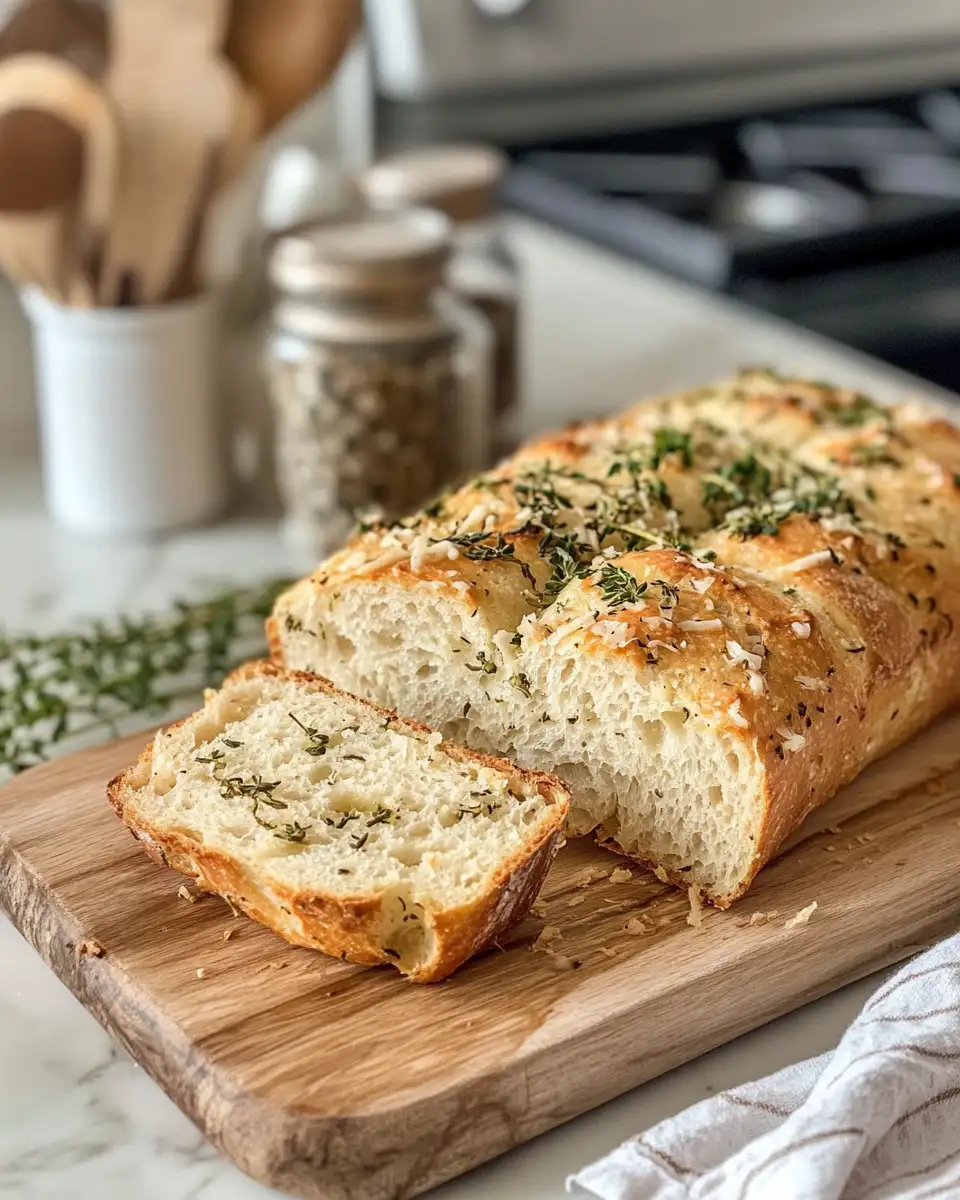
This Garlic Herb Sourdough Bread is a wonderful companion to a wide range of meals and occasions. I often serve it alongside a steaming bowl of soup on chilly evenings or use thick slices for hearty sandwiches packed with roasted veggies and melty cheese. The aromatic herbs make it equally fitting for a weekend brunch spread or a casual dinner with friends.
- Toast slices and spread with butter and honey for a simple, satisfying snack
- Serve alongside a bowl of tomato basil soup or creamy mushroom ragout
- Use for dipping in olive oil and balsamic vinegar as an appetizer
- Pair with a crisp white wine or a light, herbal tea for balance
It’s become a favourite in my home whenever I want to add a little extra warmth and flavour to the table. There’s something special about tearing into this bread with family, especially when the kids are dipping their pieces into ketchup or piling on their favourite toppings.
Storage and Reheating Tips
Proper storage is essential to keep your garlic herb sourdough bread fresh and delicious for as long as possible. I often bake a loaf in advance and rely on these simple tricks to enjoy it over several days without sacrificing texture.
- Store the bread at room temperature in a paper bag or bread box for up to 3 days to maintain the crust’s crispness
- Avoid plastic bags for storage, as they trap moisture and soften the crust
- For longer storage, slice and freeze the bread in an airtight container or freezer bag for up to 3 months
- To reheat, toast slices directly from frozen or warm whole loaf wrapped in foil at 350°F (175°C) for 10-15 minutes
Frequently Asked Questions
What are the main ingredients for Garlic Herb Sourdough Bread?
The main ingredients for Garlic Herb Sourdough Bread include the items listed in our ingredients section above. Each ingredient plays a crucial role in achieving the perfect flavor and texture.
How long does it take to make Garlic Herb Sourdough Bread?
The total time to make Garlic Herb Sourdough Bread includes both preparation and cooking time. Check the recipe card above for exact timing details.
Can I make Garlic Herb Sourdough Bread ahead of time?
Yes, Garlic Herb Sourdough Bread can often be prepared in advance. Store it properly in an airtight container in the refrigerator and consume within the recommended timeframe.
What can I serve with Garlic Herb Sourdough Bread?
Garlic Herb Sourdough Bread pairs well with various sides and accompaniments. Consider the serving suggestions mentioned in the recipe for the best dining experience.
Is Garlic Herb Sourdough Bread suitable for special diets?
Depending on the ingredients used, Garlic Herb Sourdough Bread may be adapted for various dietary needs. Check the ingredients list and consider substitutions as needed for your dietary requirements.
Final Thoughts
There’s something truly rewarding about baking your own Garlic Herb Sourdough Bread—it’s a slow, mindful process that fills your home with soul-warming aromas and ends with a loaf that brings people together. I hope you find as much joy in making and sharing this bread as I do. Please let me know how your loaf turns out—I love hearing your stories from the kitchen!



